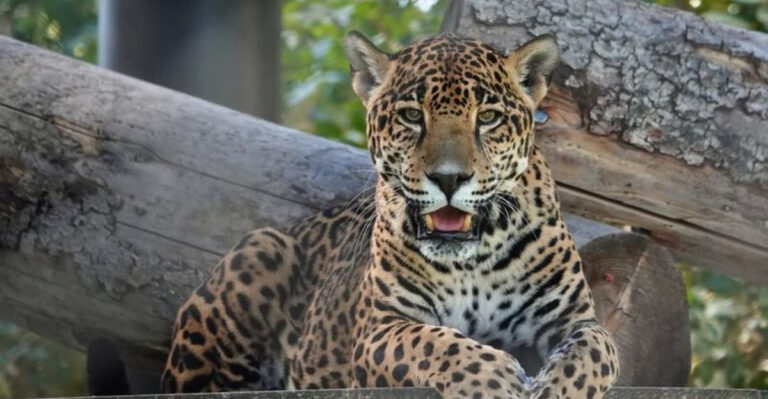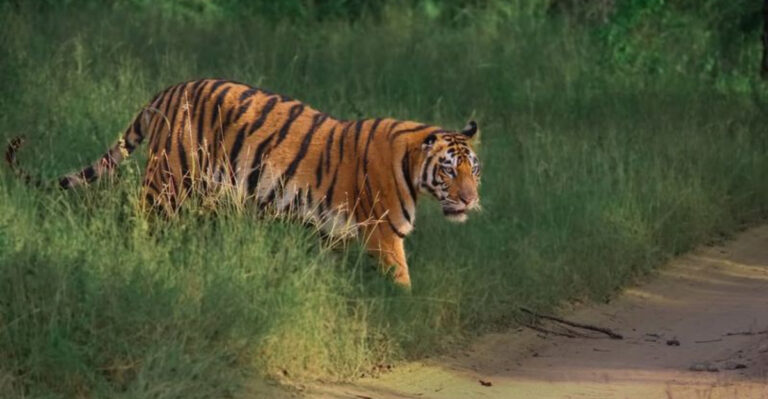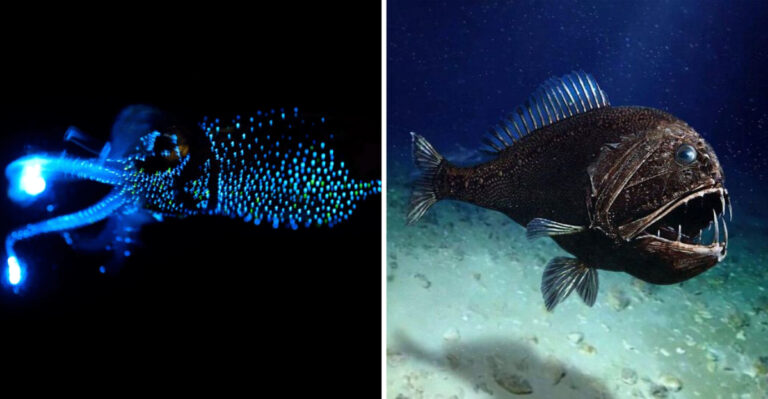10 Facts About The North American Gray Wolf, The World’s Largest
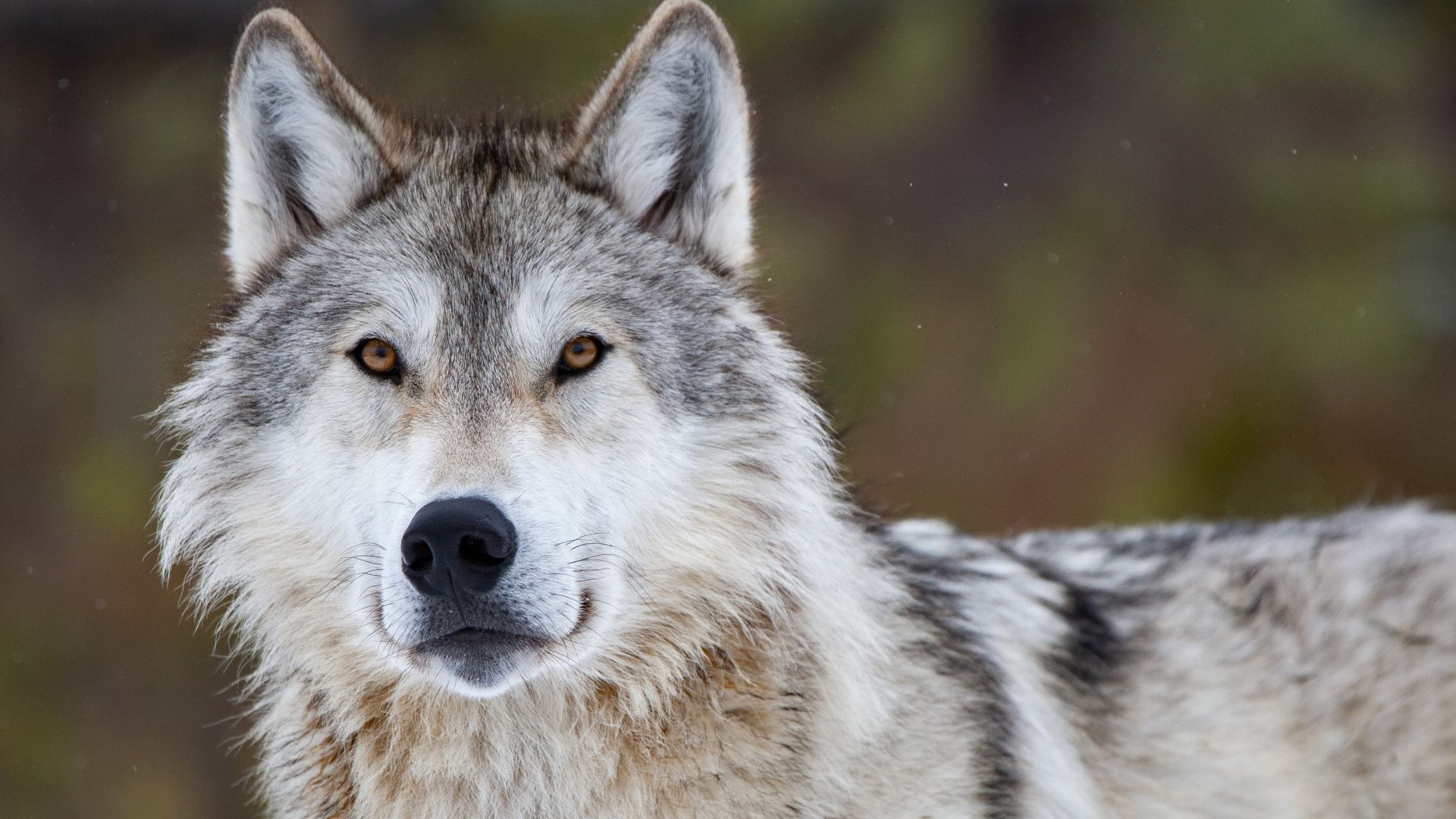
The North American Gray Wolf is a fascinating creature that captures the imagination of wildlife enthusiasts and casual observers alike.
Known for its impressive size and haunting howl, this iconic predator plays a crucial role in the ecosystems it inhabits.
From its pack dynamics to its survival strategies, the gray wolf is more than just a symbol of the wild; it’s a testament to nature’s resilience and complexity.
1. Physical Characteristics
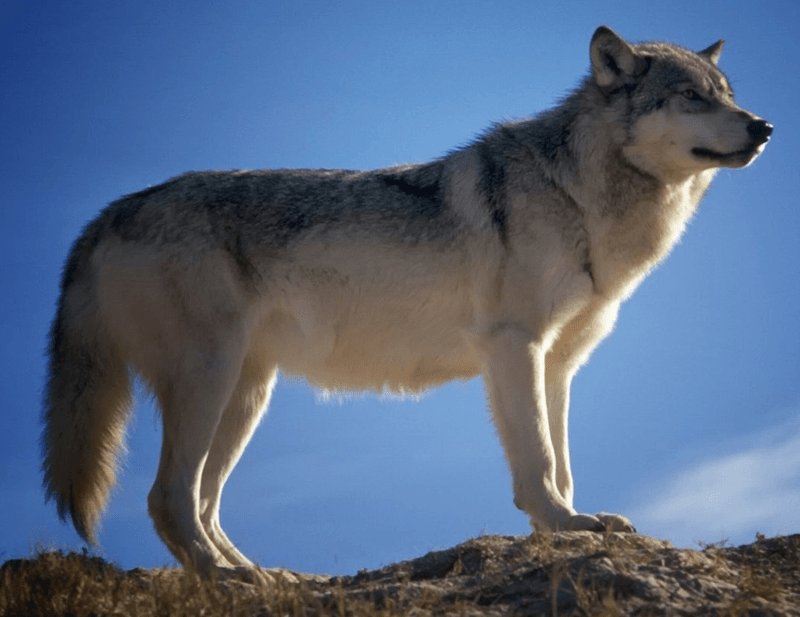
Gray wolves are renowned for their striking physical characteristics. They possess a powerful build, with long legs and large paws that enable them to traverse diverse terrains with ease.
Their thick fur coats provide insulation against harsh weather conditions, adapting in color from grey to white or even black depending on their habitat.
Their keen senses are among their most notable features. Sharp eyesight and acute hearing make them formidable hunters, while their sense of smell is used for tracking prey and detecting danger.
These physical traits are enhanced by their strong jaws and sharp teeth, essential for hunting and consuming prey.
The gray wolf’s physical prowess is complemented by its endurance and agility. These attributes not only allow them to survive in the wild but also to thrive in various environments.
The combination of strength, intelligence, and adaptability makes the gray wolf a true marvel of nature.
2. Majestic Howlers
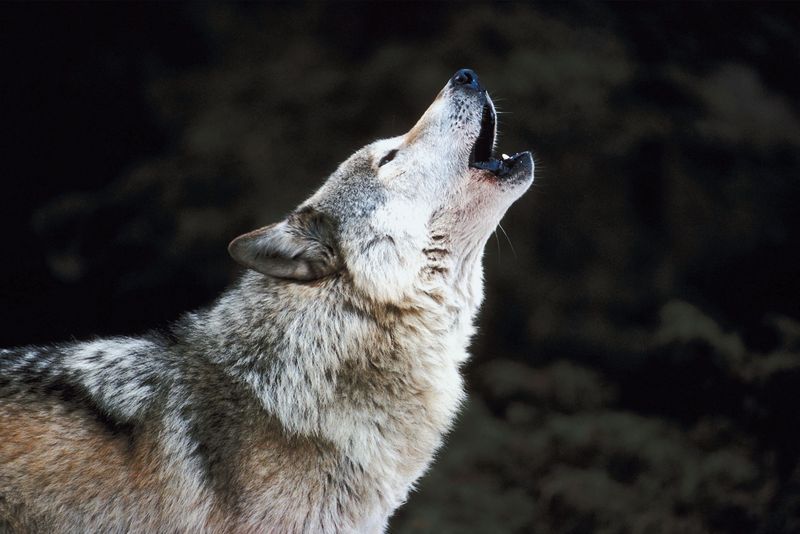
Gray wolves are known for their haunting howls that can be heard from miles away. These vocalizations are a key aspect of their social structure, allowing pack members to communicate over long distances.
Each howl has a distinct tone and pitch, which helps wolves identify each other and coordinate their movements.
These howls serve multiple purposes. They can be used to rally pack members before a hunt, warn rival packs to stay away, or simply bond with family members.
The sound can vary from a low growl to a high-pitched whine, depending on the message being conveyed. This vocal range showcases the complexity of their communication skills.
The ability to howl in unison is not just a show of strength but also a demonstration of unity within the pack. This harmony plays a vital role in maintaining the pack’s territory and ensuring their survival.
The gray wolf’s howl is not just a call of the wild, but a sophisticated form of communication.
3. Impressive Hunters
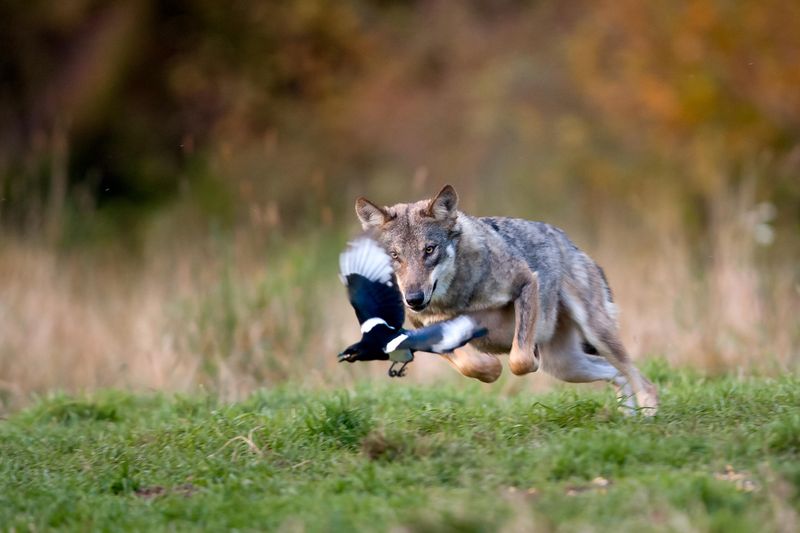
Gray wolves are exceptional hunters, relying on teamwork and strategy to capture their prey.
They primarily target large ungulates like deer, elk, and moose, which require cooperation and coordination among pack members to bring down. Their hunting technique involves a combination of stalking, chasing, and ambushing.
Wolves can run at speeds of up to 40 miles per hour, but they often rely on endurance rather than speed alone. This endurance allows them to wear down their prey over long distances.
The pack’s alpha directs the hunt, with other members playing crucial roles such as flanking or cutting off escape routes.
This organized approach increases their chances of a successful kill. Gray wolves’ hunting skills are a testament to their intelligence and adaptability in the wild.
4. Pack Dynamics
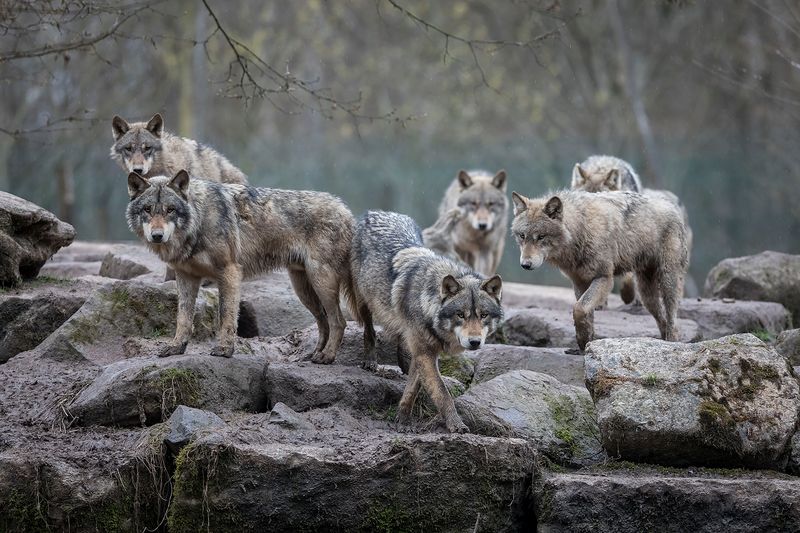
The social structure of gray wolves is both complex and fascinating. Each pack is typically led by an alpha pair, who are usually the only breeders within the group.
The pack can range from a few members to over a dozen, each with specific roles that contribute to the group’s success.
Pack members include subordinate adults, yearlings, and pups. Each member plays a vital role, from hunting and defending territory to caring for the young. This cooperative system ensures the pack’s survival and strengthens the bonds between individuals.
Social interactions within the pack are intricate, involving vocalizations, body language, and scent marking. These interactions help maintain order and reinforce hierarchies.
The gray wolf’s pack dynamics are a perfect example of how cooperation and communication are essential in the animal kingdom.
5. Habitat And Range
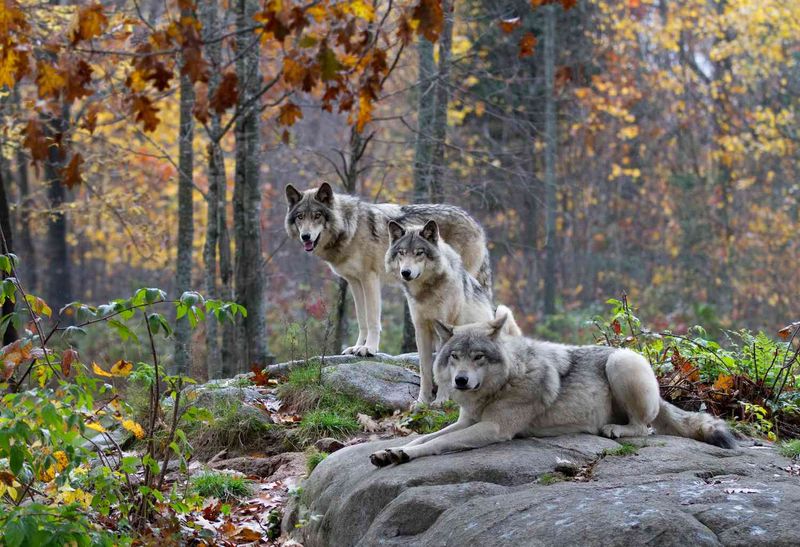
The North American Gray Wolf is highly adaptable, inhabiting a wide range of environments from forests and mountains to tundras and grasslands.
This adaptability has allowed them to thrive across large areas of North America, although human activity has significantly impacted their distribution.
Historically, gray wolves roamed freely across most of the continent, but habitat destruction and hunting have reduced their range.
Conservation efforts in recent years have helped to re-establish populations in certain areas, highlighting the importance of preserving their natural habitats.
Despite these challenges, gray wolves continue to thrive in protected areas and national parks. Their presence in diverse habitats underscores their role as apex predators, maintaining ecological balance by controlling the populations of other species.
The gray wolf’s adaptability is a testament to its resilience in the face of changing environments.
6. Dietary Habits
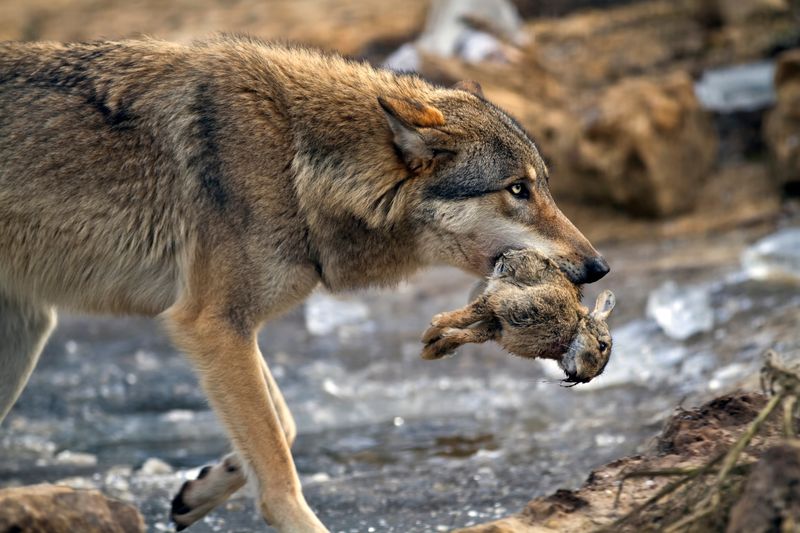
Gray wolves have a diverse diet, primarily consisting of large ungulates such as deer, elk, and moose. However, they are opportunistic feeders and will consume smaller animals like rabbits and rodents when larger prey is scarce.
Their diet varies with the seasons and availability of food. In winter, wolves often hunt in packs to take down larger prey, while in summer, they may rely more on smaller animals and scavenging. This flexibility in feeding habits ensures their survival across different environments.
The gray wolf’s role as a top predator has significant ecological implications. By controlling the population of herbivores, they help maintain the health and diversity of ecosystems.
This balance is crucial for the regeneration of vegetation and the overall stability of their habitats. The dietary habits of gray wolves highlight their importance in the natural world.
7. Reproduction And Pups
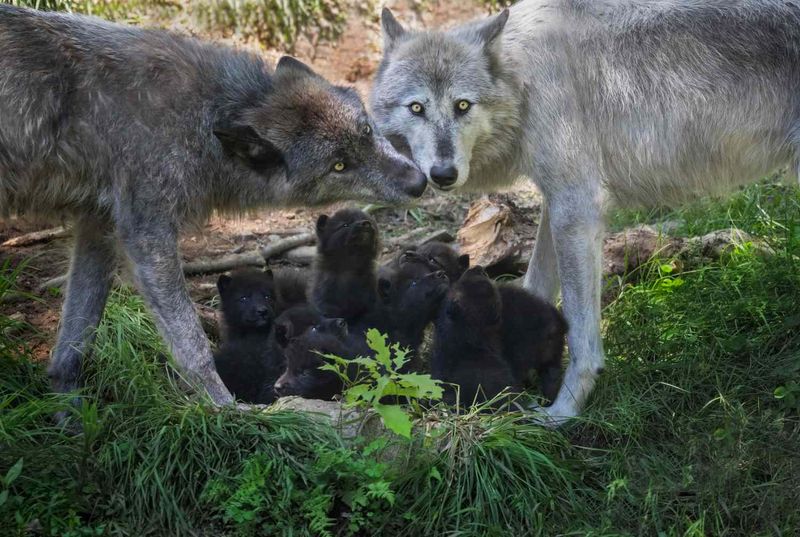
The reproductive cycle of gray wolves is an intimate and carefully coordinated process. The alpha pair mate once a year, typically in late winter, with the female giving birth to a litter of pups in the spring.
Pups are born blind and helpless, relying entirely on their mother and the pack for care and protection. The entire pack is involved in raising the young, from feeding to teaching them essential survival skills.
This collective effort strengthens social bonds and ensures the pups’ successful integration into the pack.
As the pups grow, they learn through play, honing their hunting and social skills. By fall, they are ready to join the pack on hunts.
The gray wolf’s approach to reproduction and pup rearing is a reflection of their cooperative nature and social structure.
8. Conservation Challenges
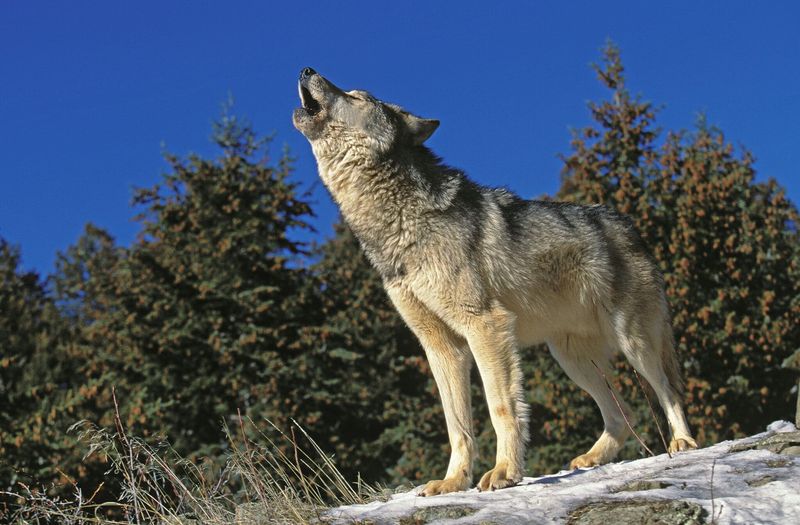
Gray wolves face numerous conservation challenges due to habitat loss, hunting, and human encroachment.
Historically, they were hunted to near extinction in many parts of North America, leading to a significant decline in their population.
Conservation efforts, such as reintroduction programs and legal protection, have helped stabilize their numbers in some regions.
However, conflicts with humans, particularly over livestock predation, continue to pose threats. These conflicts require careful management and education to promote coexistence.
The gray wolf’s story is one of both struggle and resilience. Ongoing efforts to preserve and protect their habitats are crucial for their continued survival.
As apex predators, their presence is vital for maintaining ecological balance, making their conservation a priority for wildlife enthusiasts and environmentalists alike.
9. Cultural Significance
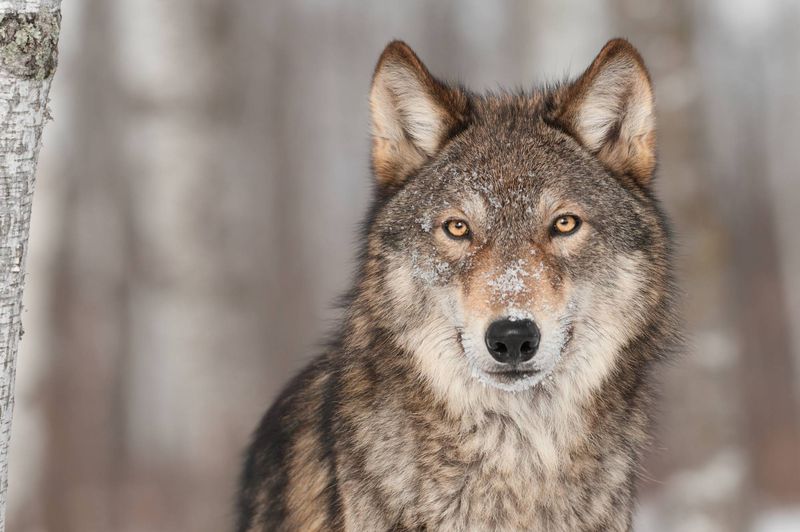
Gray wolves hold a profound cultural significance across various societies, particularly among Native American tribes. Often seen as symbols of wilderness and freedom, they feature prominently in folklore and mythology.
In many Native American cultures, wolves are revered as spirit animals, representing strength, loyalty, and wisdom.
These traits are reflected in stories and legends that emphasize their role as guardians and teachers. Such cultural narratives have helped shape the perception of wolves in modern society.
Beyond their mythological importance, gray wolves have also been a source of inspiration in art, literature, and popular media. Their iconic status continues to captivate people’s imagination, serving as a reminder of the wild’s untamed beauty.
The cultural significance of gray wolves is a testament to their enduring presence in human history.
10. Role In Ecosystems
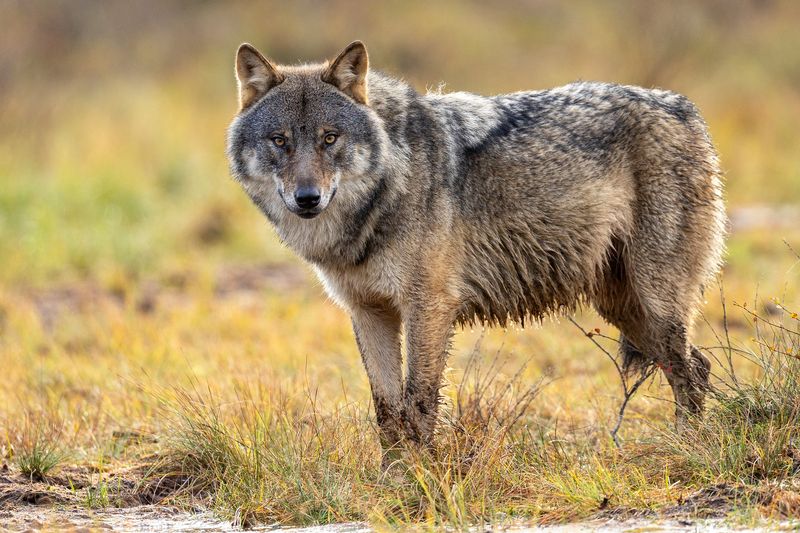
As apex predators, gray wolves play a crucial role in maintaining the health and balance of ecosystems.
By preying on herbivores such as deer and elk, they help regulate animal populations, preventing overgrazing and promoting vegetation growth.
This regulation of prey populations has a cascading effect on the entire ecosystem. Healthy vegetation supports a diverse array of species, from insects to birds and other mammals.
The presence of wolves can also influence the behavior of other animals, leading to more balanced and sustainable ecosystems.
Reintroduction efforts in areas where wolves had been previously eradicated have demonstrated their positive impact on biodiversity.
These efforts have revitalized ecosystems, showcasing the importance of wolves in maintaining ecological harmony.
The gray wolf’s role extends beyond just being a predator; it is an essential component of a thriving natural world.



